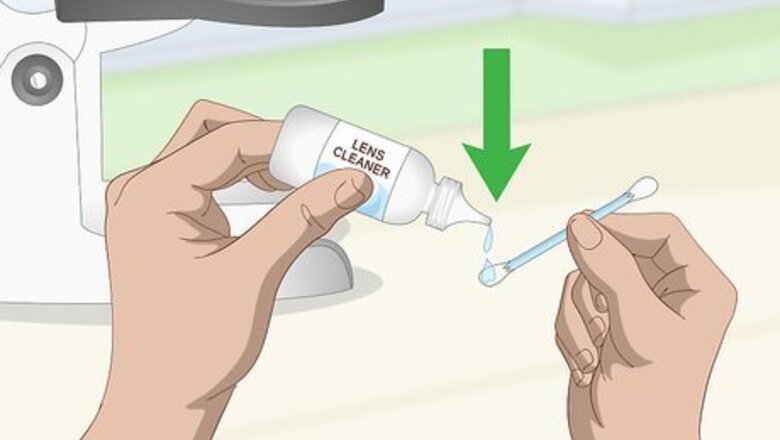
views
Cleaning Concave Lenses
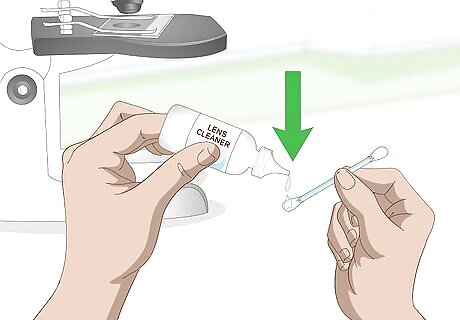
Dampen a cotton swab with 1 to 2 drops of lens cleaning solution. A cotton swab will help you clean the surface of a concave lens, which curves inward. Be sure to use a lens cleaning solution, or a solvent like acetone or xylol. If you’re using a solvent like acetone, take care not to get it on any plastic parts. Acetone dissolves most plastics and paints.
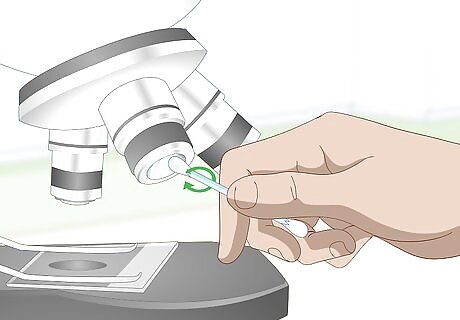
Rotate the damp swab gently in the center of the lens, moving outward. To cover the entire lens with your cleaning solution, move your swab in a spiral pattern from inward to outward. Once you’ve swabbed the outermost edge of the lens, you’ve covered the area.
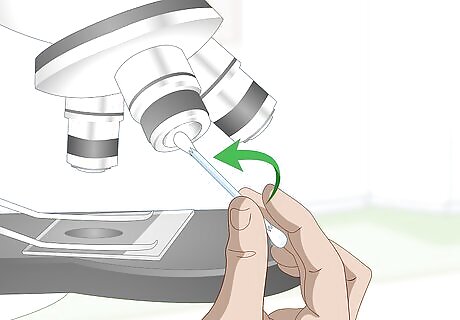
Dry the lens in a circular motion with the other end of the swab. To dry your lens, flip the cotton swab over to the dry end. Swab the lens in the same circular motion, moving inward to outward in a spiral pattern.
Cleaning Convex Lenses
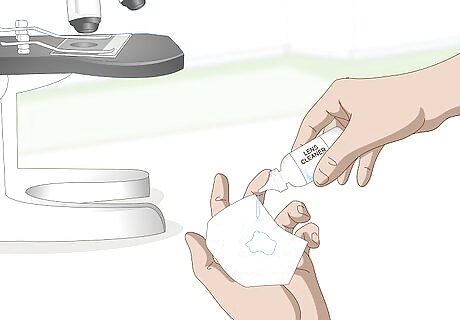
Dampen a piece of lens paper with 1 to 2 drops of lens cleaning solution. Use lens paper specially made to clean lenses. Though lens paper is soft and specially made for sensitive surfaces like a microscope lens, it’s best to use it along with lens cleaning solution to prevent scratches. Xylol can be used instead of solution for very stubborn or sticky residue.
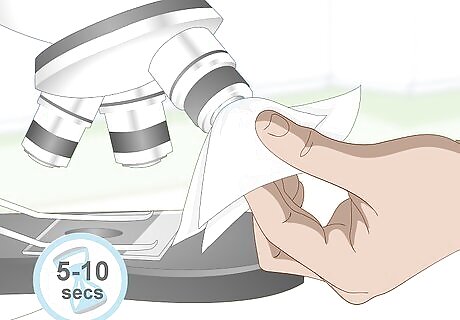
Hold the dampened lens paper against the lens for 5 to 10 seconds. Lenses of higher magnification, like a 10x lens, often use immersion oil to produce clearer images. This step will help break up any oil residue on your objective lens. Lenses that use immersion oil should be cleaned with lens paper after each use.
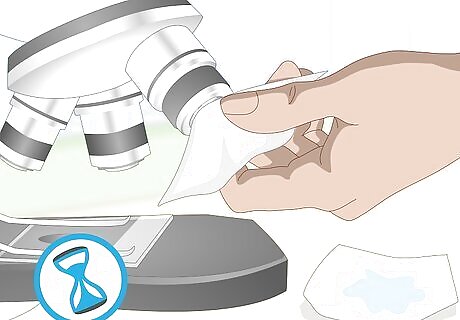
Press a dry piece of lens paper against the lens for a few seconds. To soak up the lens cleaning solution from your lens, press a new piece of lens paper against the lens. Don’t use paper towels or other tissues to wipe your lens. This can scratch it or leave more dirt behind.
Maintaining Your Lenses

Wash your hands thoroughly before handling your microscope. To avoid transferring dust or debris to your microscope, wash your hands with soap and water. Dry them thoroughly, and put on gloves afterward. Gloves will prevent the natural oils in your skin from contaminating your microscope.
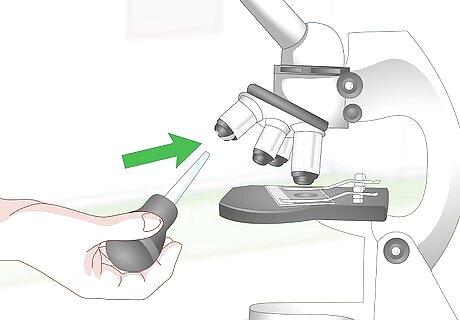
Use a manual air blower to gently spray air onto the lens. A manual air blower, typically shaped like a bulb and made of rubber, can be squeezed to produce small blasts of air. Use a manual air blower to gently blow away any dust or debris. You can purchase a manual air blower online or in electronics stores. You can also use a compressed air can, but be sure to use one that doesn’t contain any cleaning chemicals in it. This can damage the lens. Be very careful not to touch the lens with the tip of the can or blower.
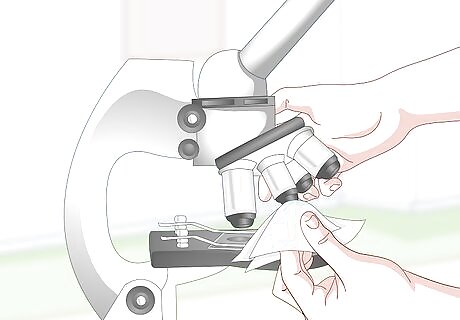
Clean immersion oil from lenses with lens paper after each use. It’s important to clean off immersion oil after every use. Oil traps dirt, and can slowly dissolve glue in objective lenses. Press a piece of lens paper against the lens to soak up any oil.
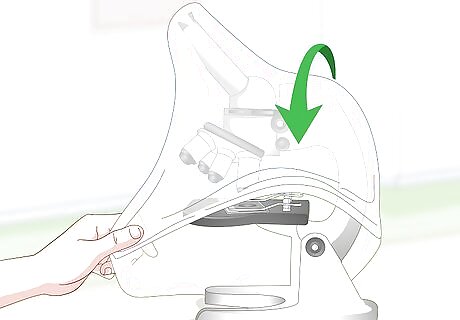
Cover your microscope when not in use to protect it from dust. A microscope dust cover helps prevent dust from settling on your microscope. Tuck in the edges of the dust cover, or make sure it’s zipped or snapped shut. Store your microscope on a flat surface to prevent it from being knocked over.
Inspecting Your Microscope for Dirt
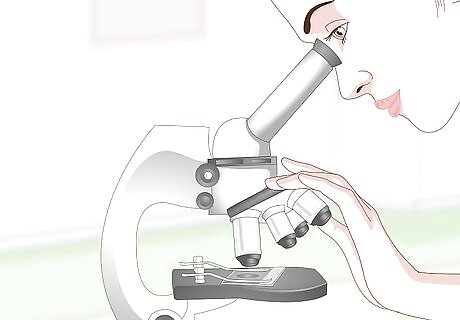
Check the exterior of the eyepiece for residue. Since microscopes are sensitive and expensive pieces of equipment, you should avoid cleaning the lenses unless absolutely necessary. Look through the eyepiece using each objective lens. If you see residue using all lenses, your eyepiece is likely dirty. If this is the case, spray your eyepiece with compressed air and wipe it gently with a lens paper.
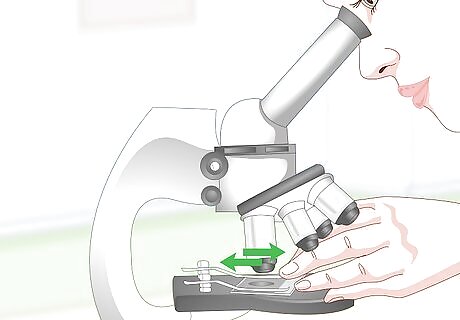
Move the slide back and forth while looking through the eyepiece. If the dirt moves along with it, the slide itself may be dirty. If the dirt stays in position, it may be your eyepiece or a lens. If cleaning the exterior of your eyepiece doesn’t remove the dirt, it may be on the inside of the lens. It’s best to take it to a professional or contact the manufacturer to have it cleaned.
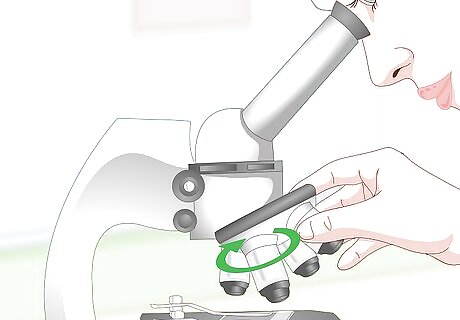
Look through the eyepiece with each lens to locate the dirty lens. If your eyepiece is clean, but you still see specks when using it, look through the eyepiece with each objective lens. If the dirt is only visible when using an objective lens, that’s the one that needs cleaning. For example, if you see dirt when using the 4x objective, but not the 10x or 400x objective lens, then your 4x objective lens is the dirty lens.


















Comments
0 comment